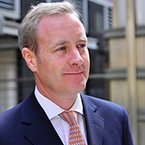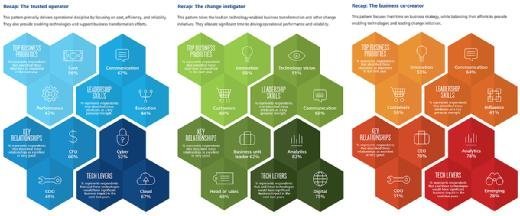
FotolEdhar - Fotolia
What type of CIO do you want to be?
There are three types of CIO, a major global research study has revealed. Which type would you like to be – trusted operator, change instigator or business co-creator?
What do you want to achieve as a CIO? Do you want to keep the IT infrastructure running, take the lead for innovation in your organisation, or drive business decisions as part of the executive board?
The latest research from Deloitte found that not only are all of these roles possible for CIOs, but that CIOs need to have the ability to nimbly switch from one role to another as the needs of their organisation change.
A survey of 1,200 technology leaders worldwide, combined with interviews with leading CIOs, has identified three unique CIO personas, all of which fulfil vital roles at different times and in different industries.
The CIO trinity
The first is the traditional CIO, known as the trusted operator, whose focus is to supply the cost-effective and reliable infrastructure the business needs.
Then there are the change instigators, who take the lead on business transformation and change initiatives.
And finally there are the business co-creators, who spend their time driving business strategy and use technology to make sometimes dramatic business changes (see panel below: What type of CIO are you?).
Why CIOs need to morph from one role to another
It would be a mistake to think of any one of these roles as more important than another. All three CIO personas require the same core skills – they need to have operational skills and be expert technologists and catalysts for the business. Which CIO you are is a matter of which skills you emphasise and how you spend your time (see panel below: What type of CIO does your organisation need?).
Deloitte’s UK CIO programme leader, Mark Lillie, said CIOs should be able to move between the three different models at different times in their careers.
“It’s a mistake to think, ‘right, today I am this, and I now need to go off on this other role’. It is more around recognising that there is a change in emphasis in what your role is and, importantly, where you spend your time,” he said.
How to adapt to the needs of your organisation
How you choose what type of CIO to be should really come down to the needs of the organisation you are working for, the type of industry you are working in, and even the internal politics of an organisation.
“You need to understand your industry, your specific company, and what profile is going to make you successful. Start to be aware of that, and how you want to adjust and move to a different type of role,” said Lillie.
What type of CIO are you?
Trusted operator: They deliver operational discipline in their organisations by focusing on reducing costs, improving operational efficiency and ensuring IT systems perform reliably. They provide technologies that enable the business, support business transformation programmes and align technology to business strategy. Trusted operators spend more than 50% of their time ensuring operational efficiency and rarely lead business transformation and growth initiatives.
Change instigator: They take the lead on technology-led business transformation initiatives. They allocate significant time to supporting business strategy and delivering emerging technologies. Change instigators spend about 40% of their time driving complex business transformations and 25% on operational efficiency.
Business co-creator: They spend most of their time on business strategy and enabling change in their businesses, to ensure they execute their strategy effectively. Business co-creators spend about 30% of their time driving business strategy and innovation, and divide the rest of their time equally between the trusted operator and change instigator roles.
Source: Deloitte
For example, if a CIO is joining a new company where there is a challenging relationship between the business and the IT organisation, it makes sense to start as a trusted operator.
First, build up trust with other parts of the organisation by showing them that the IT department can deliver business projects, reliably, to time and budget. Work hard to establish your credibility, and then start planning your next move.
“Quite consciously you need to think about how you are going to transition from a trusted operator to a change instigator or business co-creator role,” said Lillie. “That needs to be a deliberate choice because it will require different capabilities to be successful, and potentially different teams.”
Different businesses need different CIOs
Typically, CIOs follow the trusted operator model in areas such as manufacturing, government and utilities, where the resilience of core systems is a priority. In technology, telecoms and education, CIOs are generally business co-creators. Change instigators are in demand when organisations go through major transformation programmes or face turbulent business conditions.

“You need to understand your industry, your specific company, and what profile is going to make you successful”
Mark Lillie, Deloitte
“It’s about understanding the context that you need to be successful, making sure you are answering the right questions and delivering the performance required,” said Lillie.
Take time out to plan your career
Deloitte’s global head of technology consulting, Kevin Walsh, said CIOs need to take time out for personal career development – to improve their leadership and communication skills and their ability to influence other executives, and to develop their own teams – if they want to get on.

“Every good leader should be mapping out where they want to take their capabilities and their career over the next few years”
Kevin Walsh, Deloitte
It is worth comparing the way you work against the three CIO personas, then mapping that against the needs of your business and any future businesses you want to work in, he said. “Every good leader should be mapping out where they want to take their capabilities and their career over the next few years.”
Taking the next step in your career
The natural aspiration of many CIOs is to move from a trusted operator to a business co-creator, according to Deloitte’s research.
“There is a clear path around the desire to be more of a co-creator. That is definitely the aspiration where CIOs feel long-term success is,” said Lillie.
What type of CIO does your organisation need?
A trusted operator when: There are foundational issues around reliability and performance of IT; the business is going through cycles of efficiency, cost reduction and integration.
A change instigator when: There is a need for clear vision and complex project management; there is an organisational mandate for growth and change.
A business co-creator when: The organisation is experiencing rapid growth and needs a long-term view on technology investments; investment in disruptive technology requires a technology leader with business acumen.
Source: Deloitte
One smart move for CIOs who may not yet have developed sufficient influence with the business is to bring a business professional with an established reputation into the IT team. In a retail business, this could be a trusted store manager, for example.
“You can transform the brand of the IT organisation through that appointment. You can build trust by doing that,” said Lillie.
For CIOs who want to move into a business co-creator role, the answer may be to hire staff who can free them from the day-to-day task of running IT systems, for example by appointing a chief technology officer (CTO).
Has Deloitte got it right?
Not everyone will agree with Deloitte’s analysis of the three CIO personas. There are plenty of books and management courses that emphasise the need for ambitious CIOs to become chief innovation officers or business influencers, and to leave behind the role of infrastructure manager.

It is also true to say that some CIOs have their specialities and are very happy to stick with them. Some, for example, see themselves as transformational, outsourcing CIOs, while others see their focus as building great teams.
Lillie argued that reality is more subtle, however, and that the three CIO model reflects that. “This model is a more intricate but, to a certain extent, alternative way of looking at the world, because it is not saying either/or,” he said. “It is an emphasis around style and where you spend your time, as opposed to a fundamental shift.”
New opportunities for CIOs
For CIOs who can hone their leadership skills, it’s an exciting time. Business leaders are focused on technology in a way they never were in the past, and this is opening up new opportunities for technology leaders.
“More than ever,” said Walsh, “CEOs will be asking, ‘what should I be doing and where should I be going with the technology that is now suddenly available?’, and I think that is demanding different skills [from CIOs].”
In some companies, CIOs are beginning to make the transition to chief executive in a way that was unheard of in the past.
More from Deloitte’s 2015 survey
- CIOs have the opportunity to reach for the CEO position if they can hone their leadership skills.
Today’s technology boom is far more significant than the boom of the 1990s when companies were investing heavily in enterprise resource planning (ERP) systems.
Now technology is not simply changing business processes, but creating new types of businesses at an accelerating rate.
“The largest hotel group did not exist four years ago, the largest taxi firm in the world did not exist five years ago,” said Lillie. “If you don’t invest in the things most likely to disrupt your business, the things that will give you nightmares, someone else will.”
The three CIO types in detail
The CIO as a trusted operator
Trusted operators make up some 42% of the CIO population, and their mission is to see to it that systems are running effectively and efficiently. Their employers expect them to deliver reliable, scalable and secure technology. They are expected to “steady the ship” by putting in place strong governance and aligning IT with the business objectives.
Their priorities are reducing costs and raising performance of technology. They are most likely to report to the chief financial officer and will also have a strong relationship with the CEO, but less so with other business leaders. They tend to be strong at delivering the technology the business needs, but will rarely lead business innovation and growth.
“There are a number of CIOs who would say that the CIO role needs to be more on the strategic side. I think the job of the CIO is to run a very large IT organisation, and you just can’t ignore that,” one CIO in a large professional services firm told Deloitte.
The CIO as a change instigator
Change instigators are often brought into an organisation from outside to lead major technology transformations. They make up the smallest segment of CIOs surveyed, at 22%.
They list their top strengths as communication, understanding business priorities and leading in complex, fast-changing environments. Because of their role, change instigators will typically report to the CEO, and frequently form strong partnerships and alliances with other parts of the business.
There aim is to use technology to maximise the potential of the business, and that means having a strong grasp of business language. “It is a skillset that the CIO needs to develop: Listen more and listen with a business ear versus a technology ear,” the CIO of a consumer and retail company told Deloitte.
The CIO as a business co-creator
Business co-creators make-up 35% of the CIO population. Their job is to use technology to drive business strategy. At the same time they need to ensure that the IT department delivers reliable, cost effective, technology, and to lead change initiatives when necessary. Their role is the most expensive, and the most well rounded, encompassing the full range of CIO skills.
They are interested in new technology as a way of developing new sources of revenue or delivering better value to their organisation. They think long term and are likely to make bigger strategic bets.
Business co-creators spend less of their personal time building technology platforms and running operations, and more time focusing on communicating with and influencing the rest of the business.
One CIO of a global energy company put it this way: “I generate energy for where I need to be, versus what I want to do. I don’t even think any more about what my natural wiring wants to do.”











